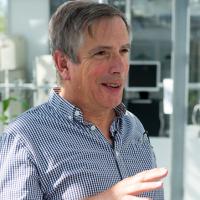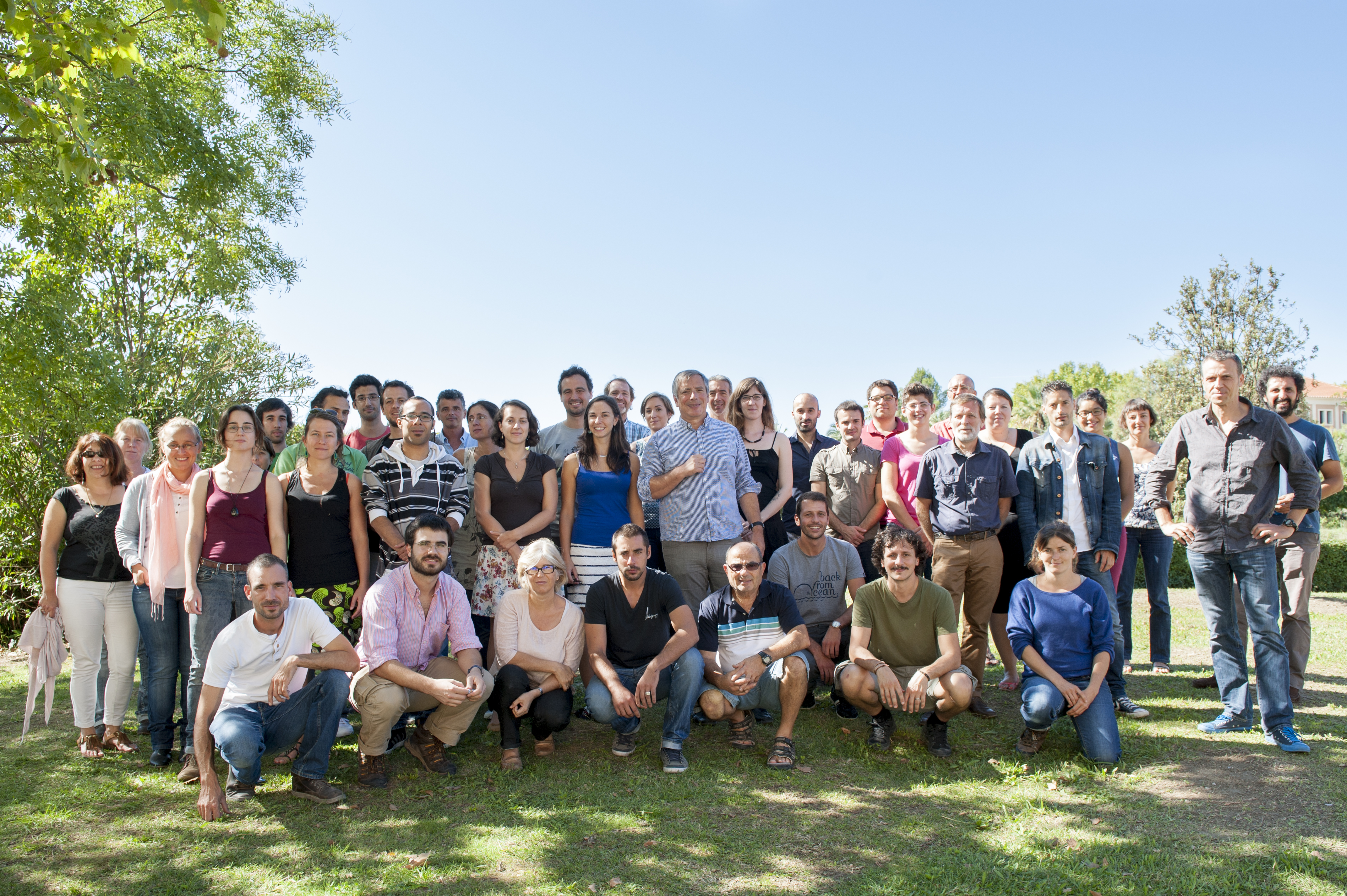
Agroecology 6 min
François Tardieu, a Green Revolution
François Tardieu studies the connections between agronomy and “hard science”, analysing the behaviour of plants under environmental stress and creating models which have become references in the field. He has published 130 articles in peer-reviewed journals, with papers being cited over 300 times. As Director of LEPSE for eight years, he has led the laboratory in its development of high-throughput phenotyping, making it a world leader in the discipline.
Published on 05 November 2014
Planting a revolution
In 1984, in vertical and horizontal trenches, armed with a soil probe in search of roots, a young post-doc student dug up INRA corn fields, perplexed by the inexact data which poorly translated what he saw on the ground. A fan of models but faithful to statistics, François Tardieu pulled up equations and constructed new references on water transfer in soil – a revolution in the world of soil. Frequently cited in agronomic studies, his work won a lectureship from the Soil Science Society of America.
Stomates have also gnawed at Mr Tardieu. These microscopic openings on the surface of leaves which regulate temperature and the exchange of gases and water, did not behave as existing models depicted at the time. For this too, he developed a different model, with colleagues in the UK, to explain what he saw: stomates regulated both by a hormone and the water content of leaves. This revolutionary model became the foundation of a species classification system now commonly used in ecology. For the first time, modelling met physiology, a field far removed from maths at the time. François Tardieu is pleased with this milestone, and “proud to have added my brick to the building. Tackling a concept that is henceforth changed as a result of my work is hugely satisfying”.
In 1991, he moved on to the growth and development of plants under environmental stress. Perturbed by contradictory carbon and volume growth measurements, Dr. Tardieu generated essential knowledge and models to simulate plant behaviour in fluctuating temperature and water conditions. His main driving force? “Eyes that light up when I talk about my work”.
By 1992, molecular physiology had emerged as a factor in agronomy. INRA offered François Tardieu, then 38, the opportunity and means to set up a pilot ecophysiology lab – LEPSE – in Montpellier. “Creating a team and research project from scratch is an enthralling experience”. Using inspiration gleaned from abroad, François built his team. Ten years later, the lab attracted attention for its breakthrough modelling of “response curves to water deficit and genetic variability”, a paper cited 200 times!
In 1998, Dr Tardieu was already looking to the future: high throughput, quantitative genetics. His pet peeve at this stage? The countless daily measurements taken by his team in greenhouses and labs. Ever tenacious and determined not to miss an opportunity, the lab director invested in two phenotyping platforms, among the first in the world to automate and robotize these measurements using imagery and motion sensors, giving LEPSE a ten-year lead into the era of high throughput ecophysiology. With updated teams and management, the lab is classified among the top 5% worldwide in this discipline, with an average of 18 papers in peer-reviewed scientific journals every year.
Drops, Phénome – Dr Tardieu now coordinates €8-24 million projects with European labs and seed companies focused on the adaptation of plants to climate change.

“Today’s international scientific community is dominated by big mercenaries who change their teams’ research subjects to get on the cover of Nature. INRA, which takes ideas to the next level, is a good antidote. While I haven’t always initially been supported in my choices, I’ve been allowed to see them through, even when they’re not (yet) in style! I wish young researchers the same luck”.
- 61, 5 children
- 1977: Agricultural engineer (INA PG)
- 1984: PhD in Ecophysiology
- 1993-2003: Director of the Joint Research Unit for Ecophysiology of Plants under Environmental Stress (LEPSE)
- 2002-2005: Deputy Head of INRA's Environment and Agronomy Research Division, in charge of the ecophysiology programme
- 2014: Team leader at LEPSE, coordinator of the EU FP7 project LCP DROPS (2010-2015) €9 million, coordinator ANR-IA French Plant Phenomic Network (Phenome), €24 million, president of InterDrought
Distinctions
- Soil Science Society of America for work on roots and water transfer (2001)
- 2014 Agricultural Research Award for Scientific Excellence
